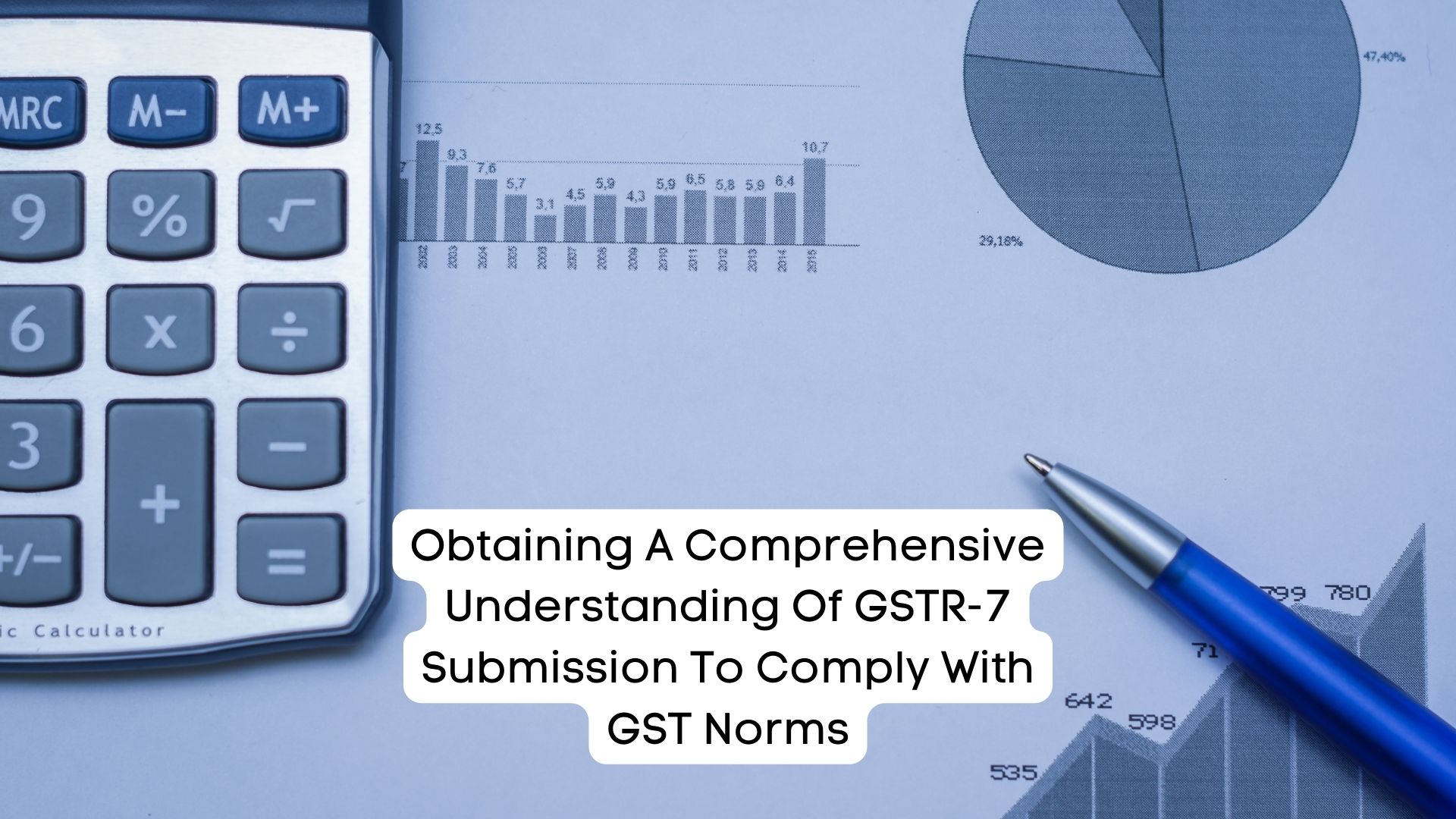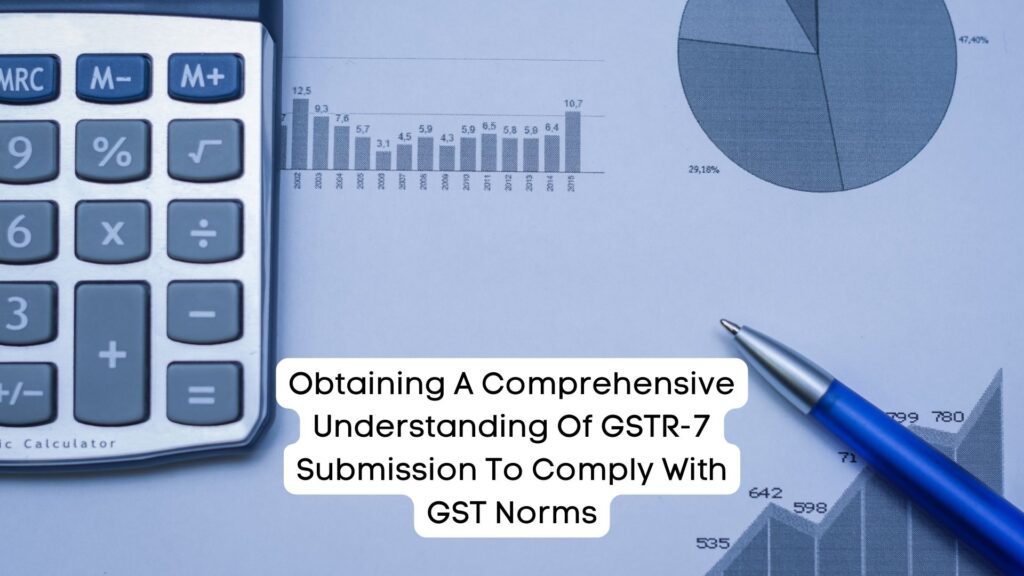
20 Feb Obtaining a Comprehensive Understanding of GSTR-7 Submission to Comply with GST Norms

In maneuvering through the intricate domain of Goods and Services Tax (GST) adherence across diverse jurisdictions, enterprises confront the essential responsibility of timely and accurate filing of GST returns. Within the Indian context, a pivotal component of this compliance is the GSTR-7, tailored for TDS deduction under the GST framework. The objective of this article is to present a comprehensive manual for apprehending GSTR-7 return filing, embracing eligibility conditions, essential paperwork, and the procedural sequence.
What is GSTR-7?
GSTR-7 stands as a pivotal return form within India’s GST framework. It primarily caters to businesses or individuals mandated to deduct TDS under the GST regime. The essence of GSTR-7 lies in capturing pertinent details regarding TDS deductions, payments, and adjustments during specific periods. By doing so, it upholds transparency and accountability in the TDS process, ensuring a seamless flow of tax revenues to the government coffers.
Entities obligated to file GSTR-7 include government departments, local authorities, and certain other specified persons. They are required to furnish comprehensive information regarding TDS deductions and deposits, along with details of the deductee.
Eligibility for GSTR-7 Return Filing:
GSTR-7 filing is specifically applicable to entities obligated to deduct TDS under the GST regime in India. This includes:
- Government departments
- Local authorities
- Other specified persons notified by the government
Compliance with GSTR-7 filing requirements is crucial for entities falling under these categories to accurately report TDS deductions and deposits within the stipulated timeframe.
Essential Documents Required:
During GSTR-7 return filing under the GST system in India, the following documents and information are essential:
- TDS Certificates
- Deductee Details
- TDS Challan Details
- GSTIN
- Input Tax Credit (ITC) Details
- Any other supporting documents relevant to TDS deductions
Step-by-Step Guidance in GSTR-7 Return Filing Process:
The process entails several steps, including:
- Logging in to the GST Portal
- Navigating to GSTR-7
- Providing TDS Details
- Verifying and Validating Details
- Saving and Generating JSON File
- Uploading and Filing GSTR-7
- Payment of TDS (if applicable)
- Acknowledgement and Filing Completion
Advantages of GSTR-7 Return Filing:
- Compliance with TDS Provisions
- Transparent TDS Process
- Streamlined TDS Reconciliation
- Seamless ITC Claim
- Improved Compliance Management
- Integration with GST Network (GSTN)
Conclusion:
In conclusion, GSTR-7 return filing holds immense significance in the realm of GST compliance, particularly for entities involved in TDS obligations. Adhering to the GSTR-7 filing process ensures compliance, fosters transparency, and facilitates smoother transactions within the GST framework.


No Comments